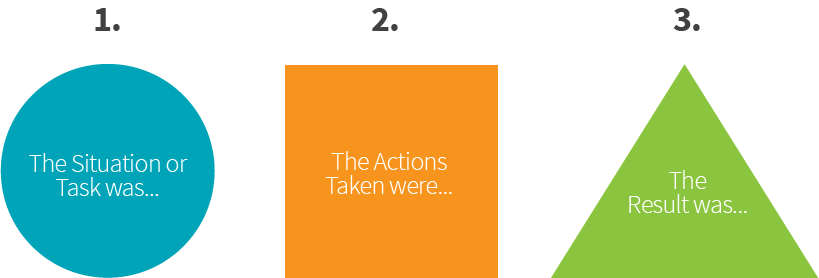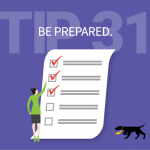Career Tip 30: Be a STAR – STAR Responses for Inevitable Behavioral Interview Questions
STAR Responses for Inevitable Behavioral Interview Questions.
Let’s begin with what you need to know about behavioral interview questions. Behavioral questions are the primary type of questions used by professionally trained recruiters. Actually, the more sophisticated the organization, the greater the likelihood you will encounter behavioral questions.
What is a behavioral question? It is a question that asks for a detailed example of a candidate’s past performance in a specific situation. Recruiters use this category of questions because research demonstrates that past behavior is the best indicator of future performance. Accordingly, such questions often begin with Tell me about a time when… Describe a situation when… Give me an example of…
If you provide a great example of past performance, recruiters tend to believe you will perform similarly when faced with a similar situation in your new job. Generalities and vague thoughts about what you might do cannot convince a recruiter of your skill set.
Interviewers using this approach focus a candidate’s responses by using a 1-2-3 ST-A-R method of questioning.
- Tell me about a specific Situation (S) or Task (T) in the area of_________?
- Explain the Actions (A) you took or what you did.
- Finally, what was the Result (R) you achieved?
Here is a diagram of a behavioral answer.

Some employers call these behavioral questions BARs (Baselines), FARs (Facts), or CARs (Circumstances). No matter which name is used, the 1-2-3 steps remain the same.
- The first (#1) step is to provide a concise statement, using facts, describing the pre-existing situation.
- The second (#2) step is a description of what you did to address the situation.
- The third (#3) step is to provide a concise statement, using facts or measurements, of the results you achieved.
Here are two behavioral question examples:
- Tell me about a problem at work that had been lingering for quite some time that you decided to tackle.
- What action did you take?
- What were the results of the action you took?
- Describe a situation when you determined that a standard work process, the way it was always done, was no longer the optimal way to do that task.
- Explain the actions you took to make changes to the process
- What measurable results were you able to achieve with the process changes you initiated?
Checkpoint
Here’s how to prepare to do your best.
- The most common oversight when answering behavioral questions is leaving off the results you achieved. Don’t do that. The results are what clearly prove your achievement. It is not sufficient to say, “The improved process was faster.” Say instead, “Before we got started, the job took three hours to complete. What we did to improve the process was _________. In the end, it took 2.5 hours, which saved the department $100K annually.” If you do not know the exact results, a good-faith estimate is always an acceptable approach.
- Even if an interviewer does not format questions using a behavioral approach, the most convincing answer to any interview question is formatted as a STAR. For example, “Let me tell you about an instance that will answer that question…” Recruiters love to hear—and will remember—
- A question The Job Dog is often asked is, “What if I am asked a STAR question for which I do not have an experience or example?” The suggested reply is, “I have not had that experience, but a similar situation is…”
- Begin working your way through the following list of questions as you develop your resume. Such questions are likely to help you recall accomplishments.
- Finally, review the job posting to identify statements that are likely candidate selection factors. You can realistically expect a skilled interviewer to always ask a behavioral question in each area.
The Job Dog’s last comment about STARS is to be brief. Use sound bites. Each answer should be 15-30 seconds in length, total. Save the rest of the details to expand your initial thought, if requested to do so.










